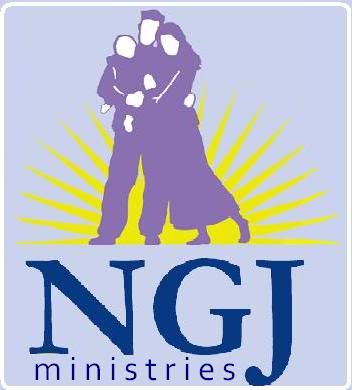but I will admit to being confused for several weeks.
~ Daniel Boone ~
If you find yourself "confused" and in need of rescue there are a variety of ways to let your rescuers know your location.
You can utilize a variety of materials to signal for help including fire, smoke, flashlights, brightly colored clothing, reflective mirrors, whistles, or electronic devices. Remaining calm can enable you to use your imagination to plan a creative way to signal potential help. Knowing your options can save your life by keeping you from making a deadly mistake.
At the moment you realize you are lost, create a marker to designate your spot. Pile some rocks together, bend some branches, or create some other easily recognizable sign so that you will know the spot. This will be your base. If you decide to try and make your way out, this is where you will return for another try if your first attempts fail. This will also be the place you wait for rescuers.
If you choose to move away from your base, leave a note at the marker. Tell your plans and your direction of travel. As you travel mark the way at regular intervals with a pile of stones, a broken branch, or some other easily identifiable clue as to where you have been. This will help rescuers find you.
Personal Locator Beacons (PLB's), avalanche beacons, satellite phones and other electronic safety devices can be used in the outdoors. Additional location devices that can be used to signal rescuers include Emergency Locator Transmitters (ELTs) used by pilots and Emergency Position-Indicating Radio Beacons (EPIRB) used by mariners.
While these are considered safety tools, they may also tempt those who carry them to feel they can engage in risky behavior. The belief that rescue from mistakes is just the press of a button away can turn your cell phone, GPS unit or other locator device into a personal body locator.
Be aware that electronic devices do not always function even in ideal conditions. Rugged mountainous areas and rural areas often have spotty reception, if any at all. Damage, battery life, and user incapacitation can all compromise the effectiveness of these devices.
It is always prudent to bring extra survival gear and depend upon survival training and good judgment should something unplanned occur. Be aware of your own personal limitations, the limitations of your equipment and other conditions. That will eliminate the need for search and rescue services, and PLBs.
Flares are highly visible but not long-lasting. Don't waste them. Lights can't be seen during the day unless the rescue party is close. These are more easily seen from great distances at night.
Three blasts is the universal signal for distress. This applies to gunshots as well as whistles. Two blasts mean "All is well." Under the right conditions, a rescue whistle can be heard up to 5 miles away.
The survival whistle is also useful in urban environments. It can be used for defense by drawing attention to the situation. Children can carry a small survival whistle on a string around their neck.
Metal whistles are not recommended. Wet flesh will freeze to metal when cold. If you plan to wear a whistle or keep it in your pocket, a plastic whistle with a flat shape may be best.
The ACR WW3 (ResQ Whistle) is a flat plastic whistle with a dual chamber that can be had for less than $3. It was developed for the U.S. Navy. Plastic storm safety whistles are a favorite of life guards. These are so loud that they can even be heard underwater. Storm whistles run around $5 each.
Mirrors can make you visible to rescuers, but you must know how to use them. When aimed correctly, the brilliant flash from an emergency signal mirror cannot be ignored. It will reveal your position in the densest of vegetation or in the most rugged mountainous landscape from an average distance of 10 miles or more.
Commercially available signal mirrors are shatter resistant, lightweight, small and some have holes for hanging from a lanyard worn at the neck or belt. These mirrors also have an aiming hole in the center. Using this aiming hole, the viewer can point the mirror towards rescuers on the ground or in the air and see where the reflected beam is hitting, making adjustments to direct the beam more accurately.
Two methods that can be used to aim the reflected light are the stick method and the hand method.
To use the hand method, extend your hand and form a "V" with two fingers. Position this "V" so that the object you wish to flash (an airplane for example) can be sighted between the two fingers. Tilt the mirror slightly to move the reflected light beam across your hand towards the center of the "V." This will allow your light beam to come in contact with your target.
Another way to direct your signal is to find a stick that is chest or head high. Position yourself so that the top of the stick and your mirror are in line with the object you wish to signal. Move the mirror so that the reflected light hits the top of the stick.
Scan the horizon regularly with your signal mirror. You may not be able to see rescuers, but they might see you. Also, once you've alerted your target, don't continue to flash them. The flash from your signal mirror is so bright as to be blinding.
The time to practice aiming your mirror is before you ever need to use it.
For a demonstration of signal mirror use, watch the video below:
There are a variety of symbols that signal a need for help. These can be placed on horizontal or
You can stamp these symbols out or use tree limbs, rocks, vegetation or brush to make the signal more visible. If you are in a sandy or flat area, try scraping the symbol into the dirt. You can place signal fires (or flares) in the shape of a triangle, positioning the flames at each corner.
If you have a vehicle, make it more visible from the air and from a distance by clearing vegetation, using a cloth for a flag, or use some other creative solution. Use fuel and oil to start signal fires and feed them with material from the car that creates smoke. Place as many symbols as possible around your location to make your position most visible.
Once help has been spotted, wave. Be sure to wave with two hands and arms. This signals distress. Waving with one arm indicates all is well. It is best NOT to get these confused.
If you feel that the chance for a quick rescue is great and it takes little energy for you to signal, then signaling for rescue should be high on the list of priorities of someone who needs rescuing.








No comments:
Post a Comment